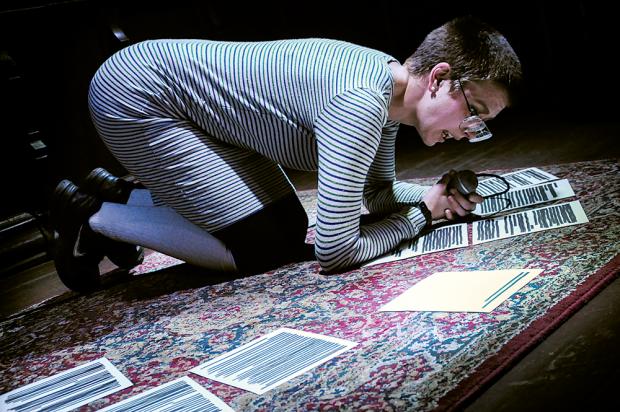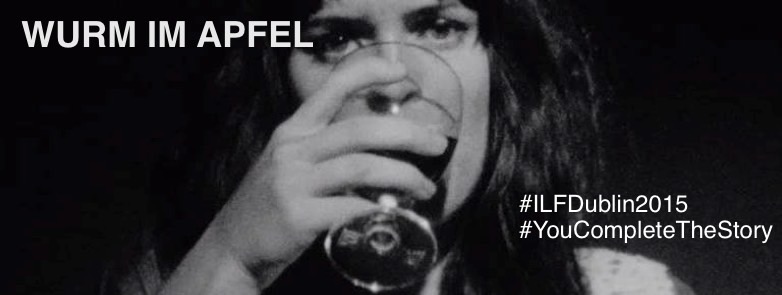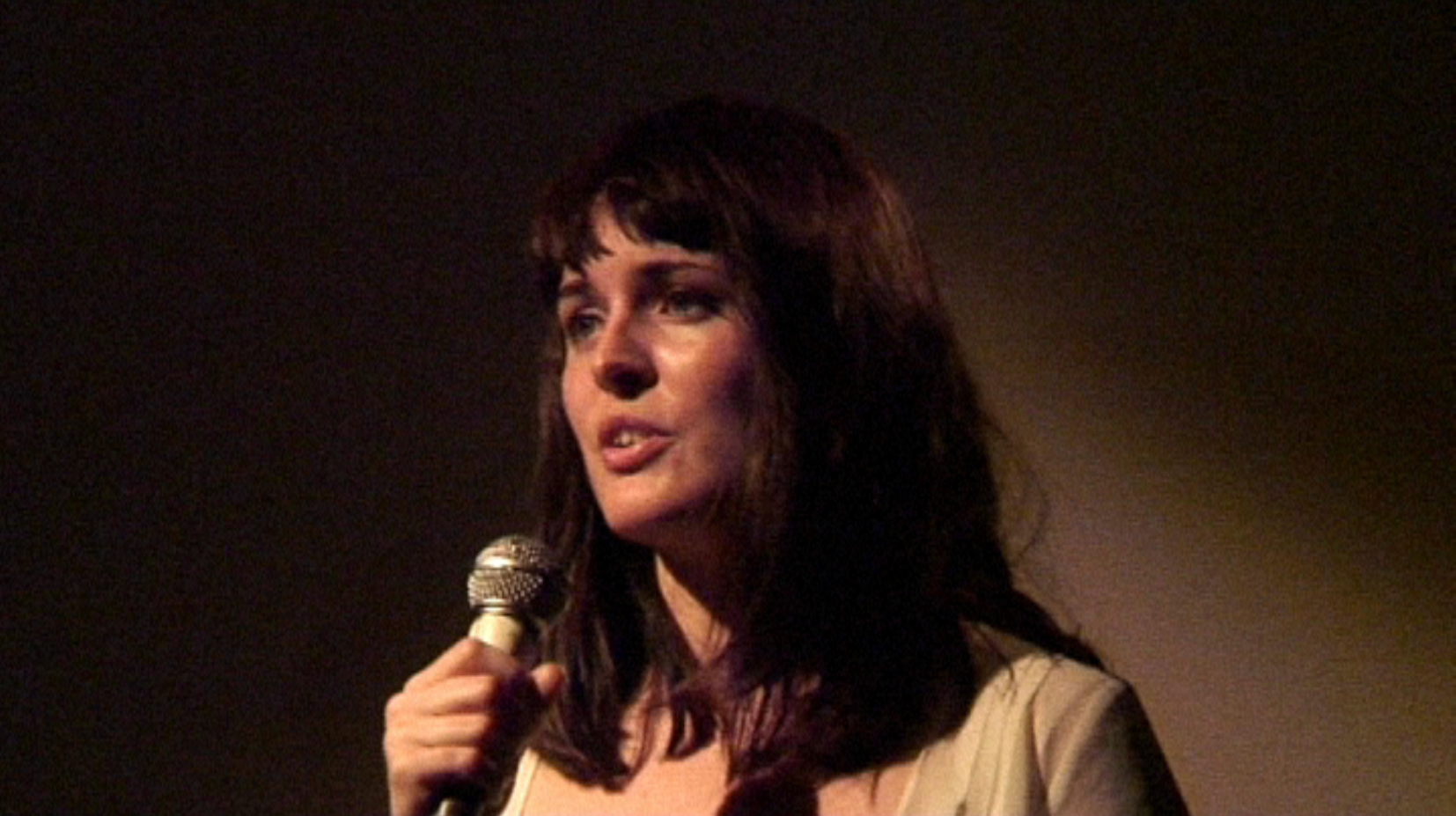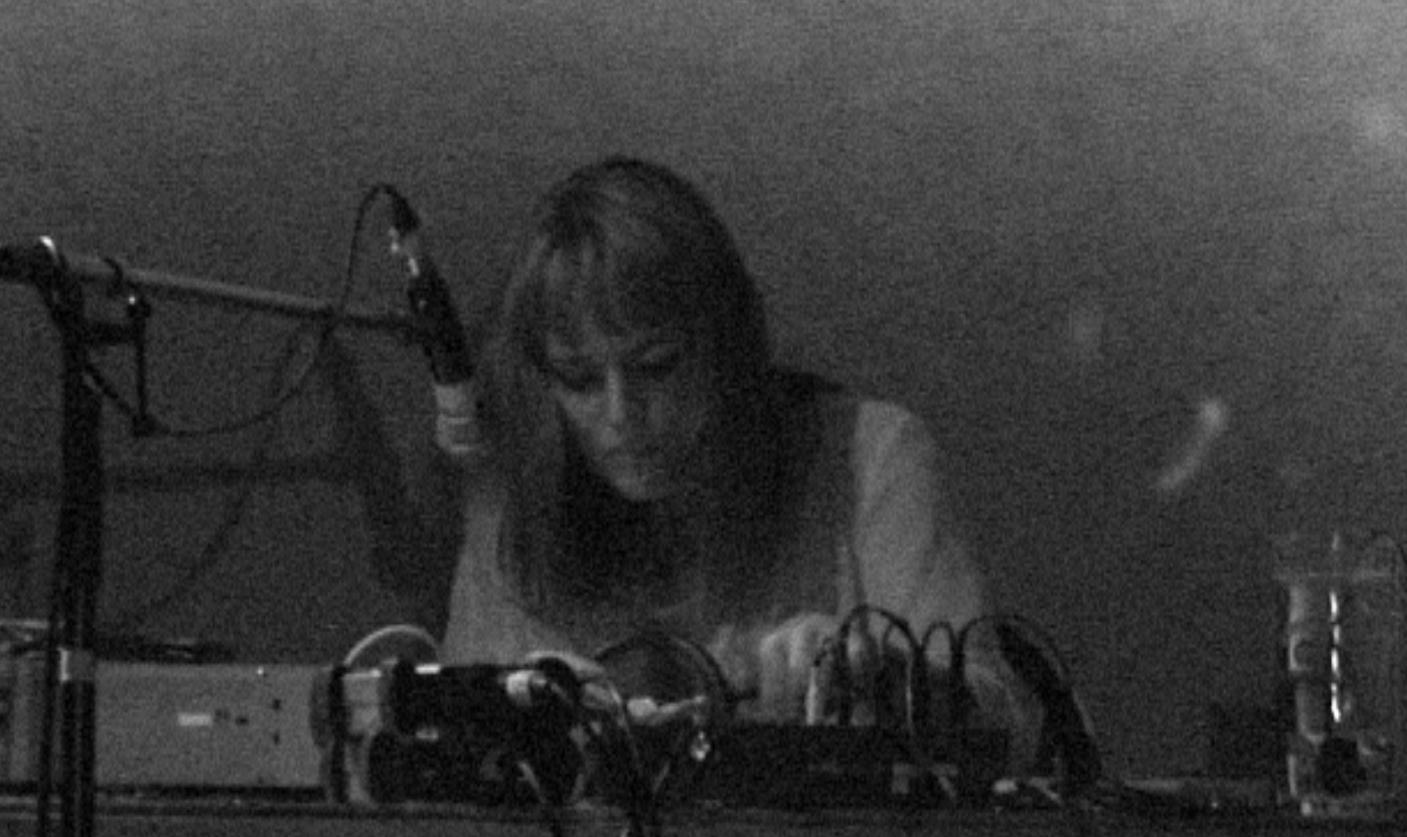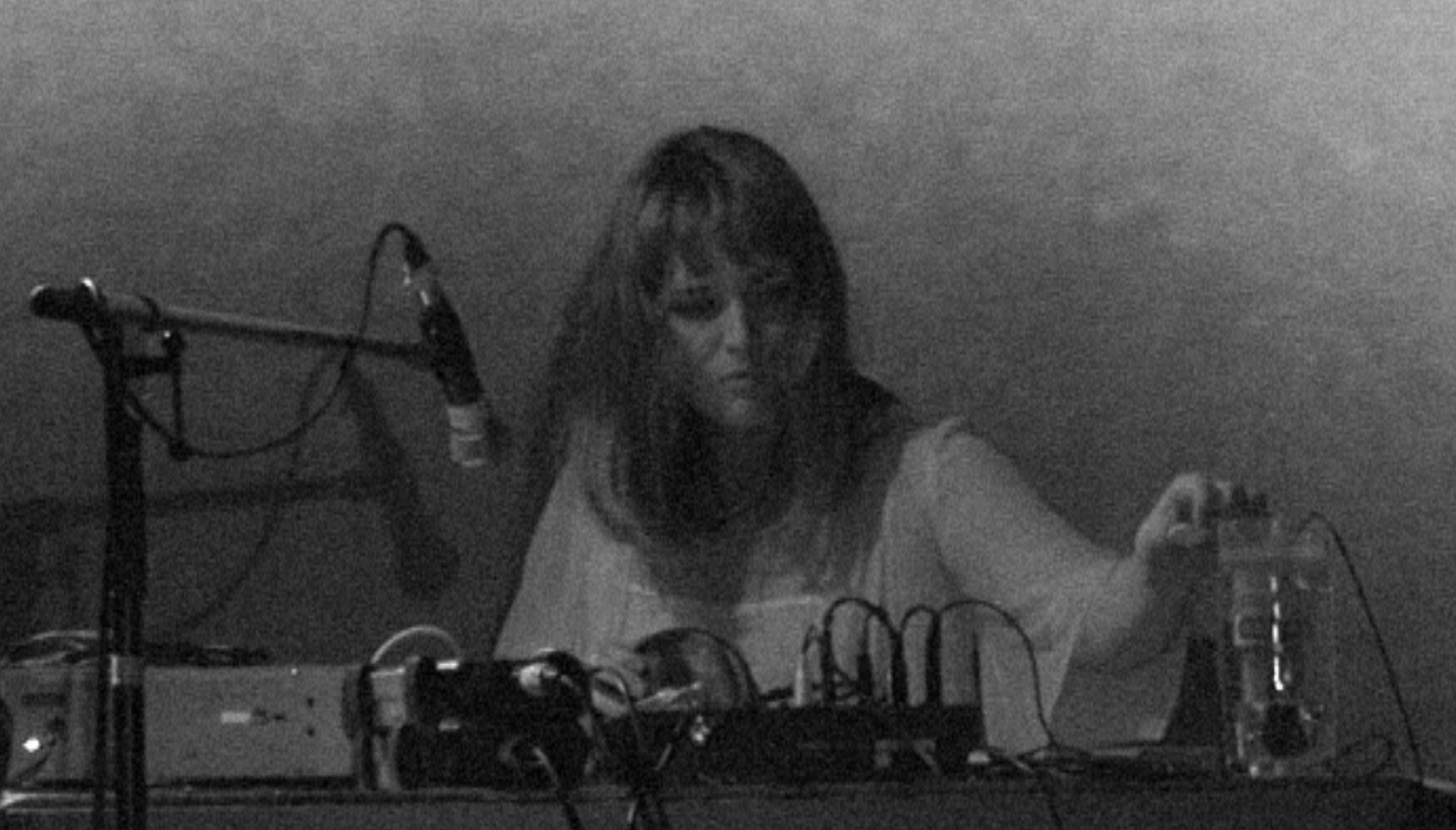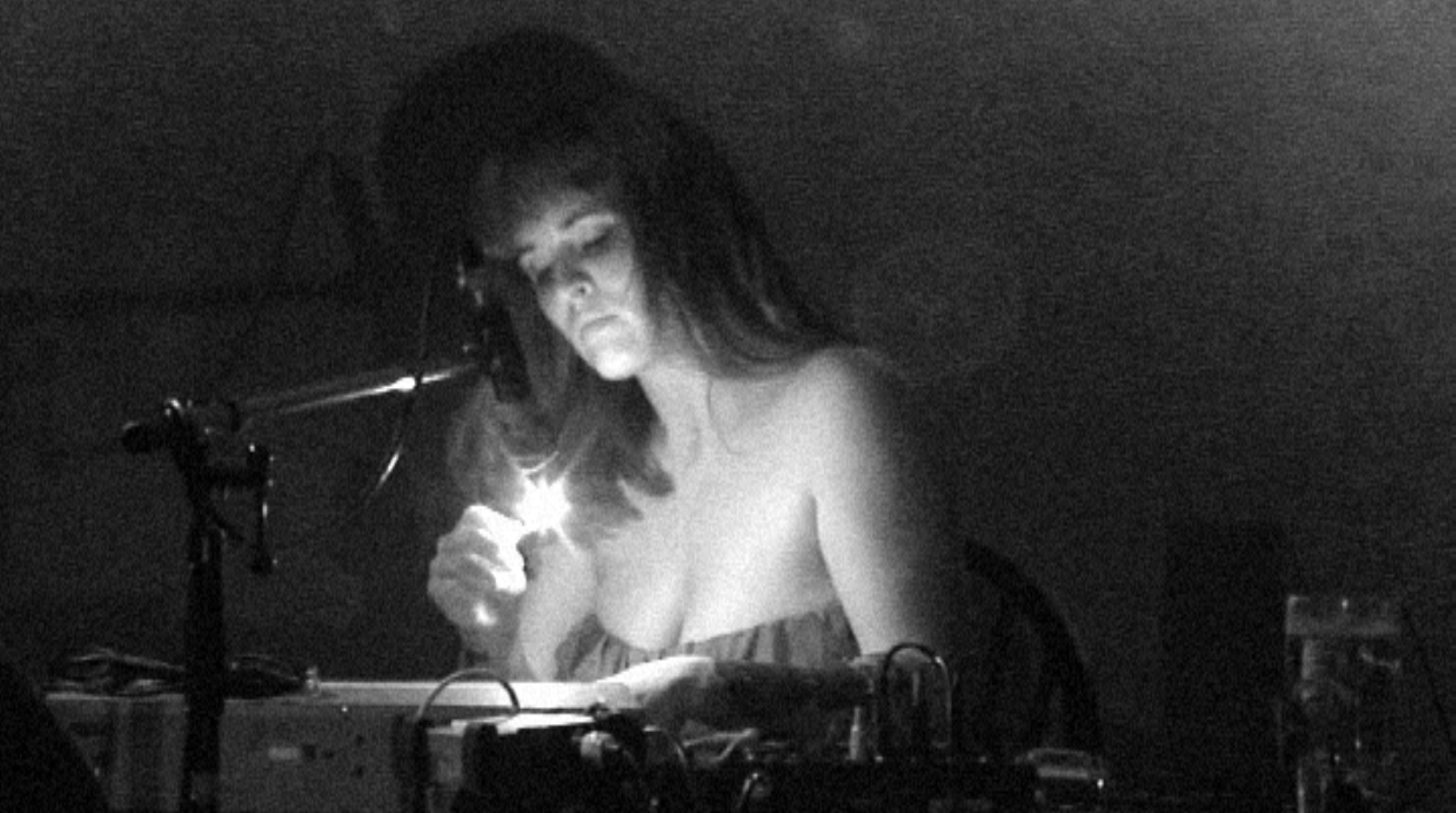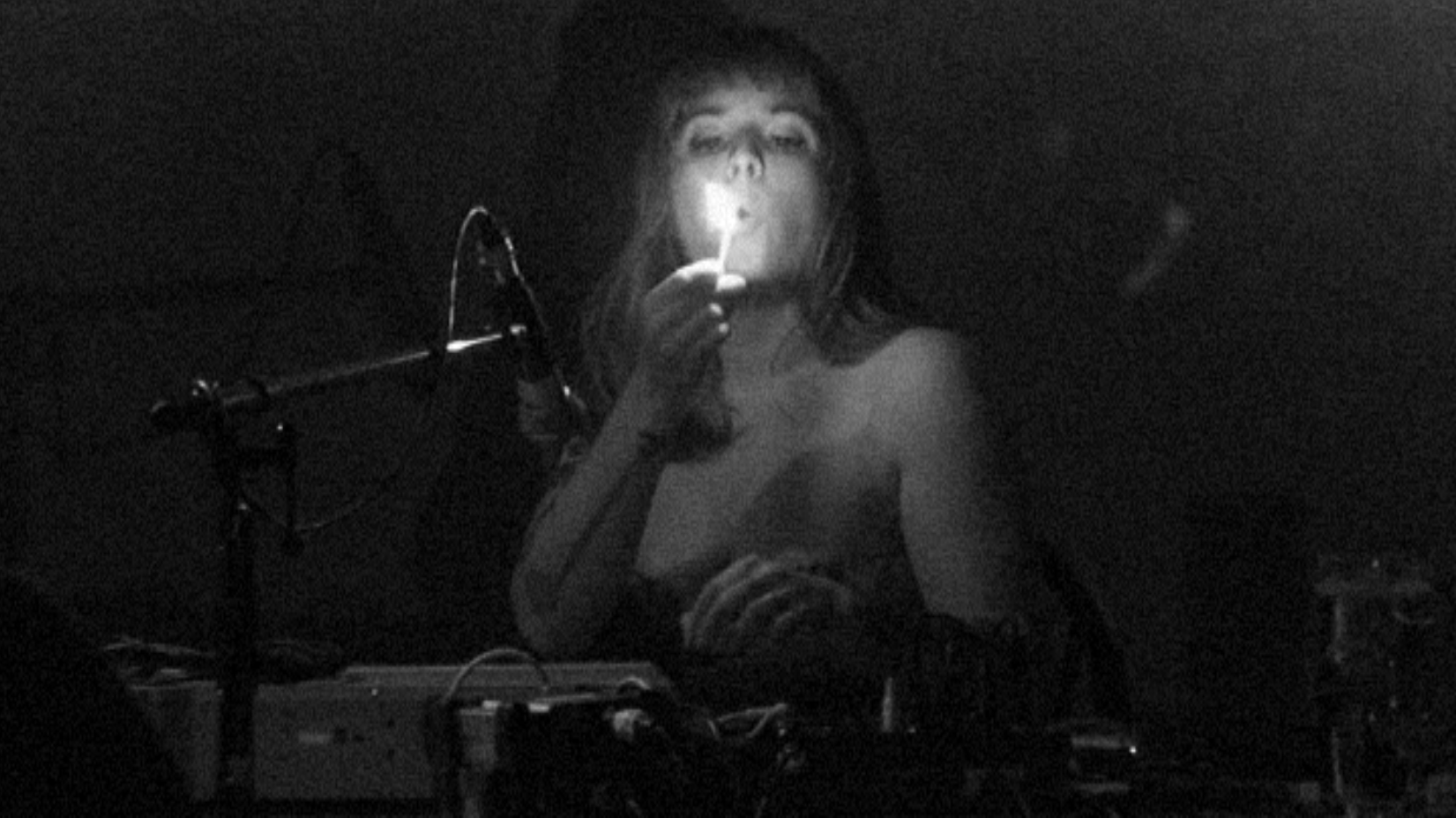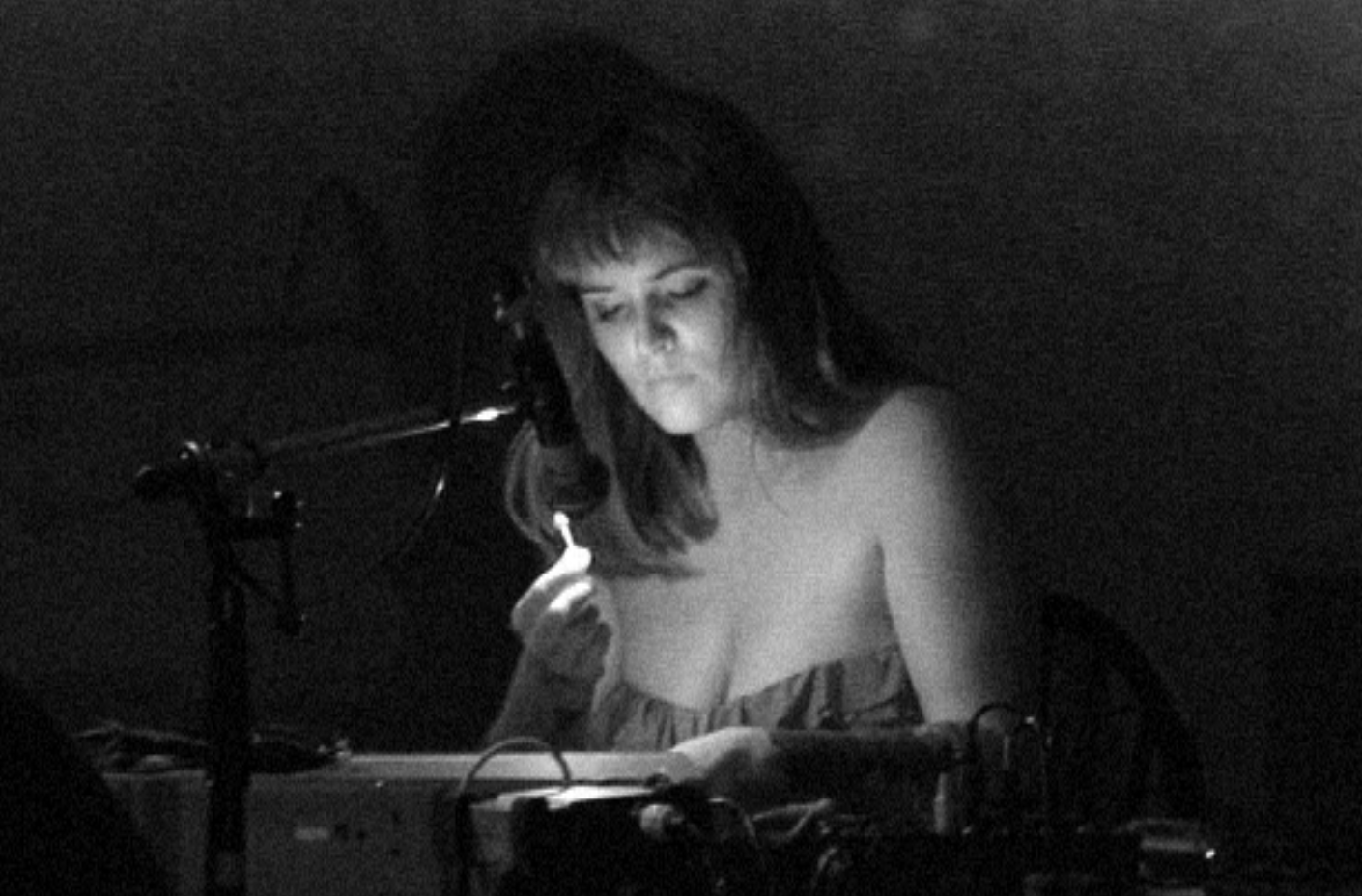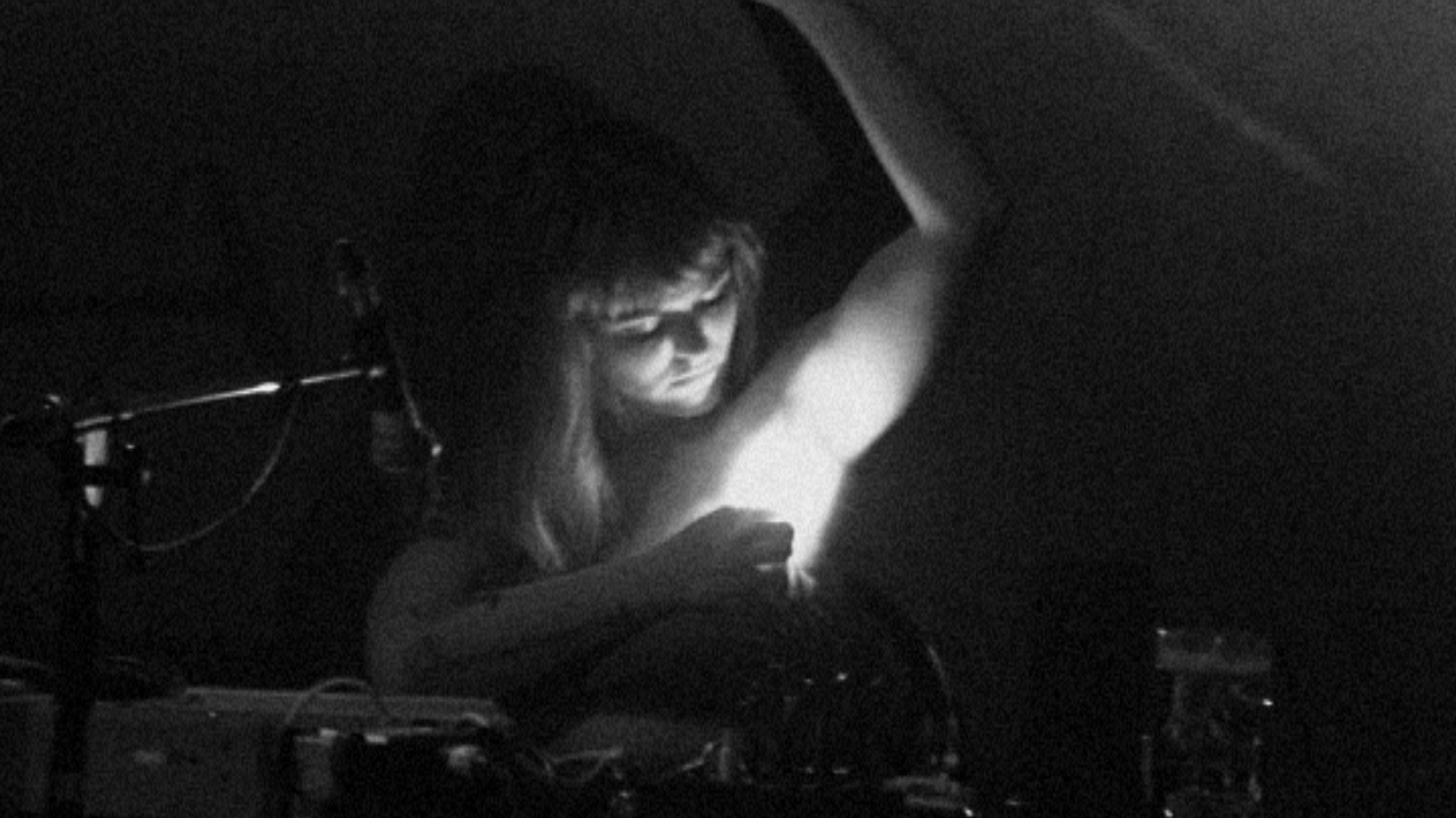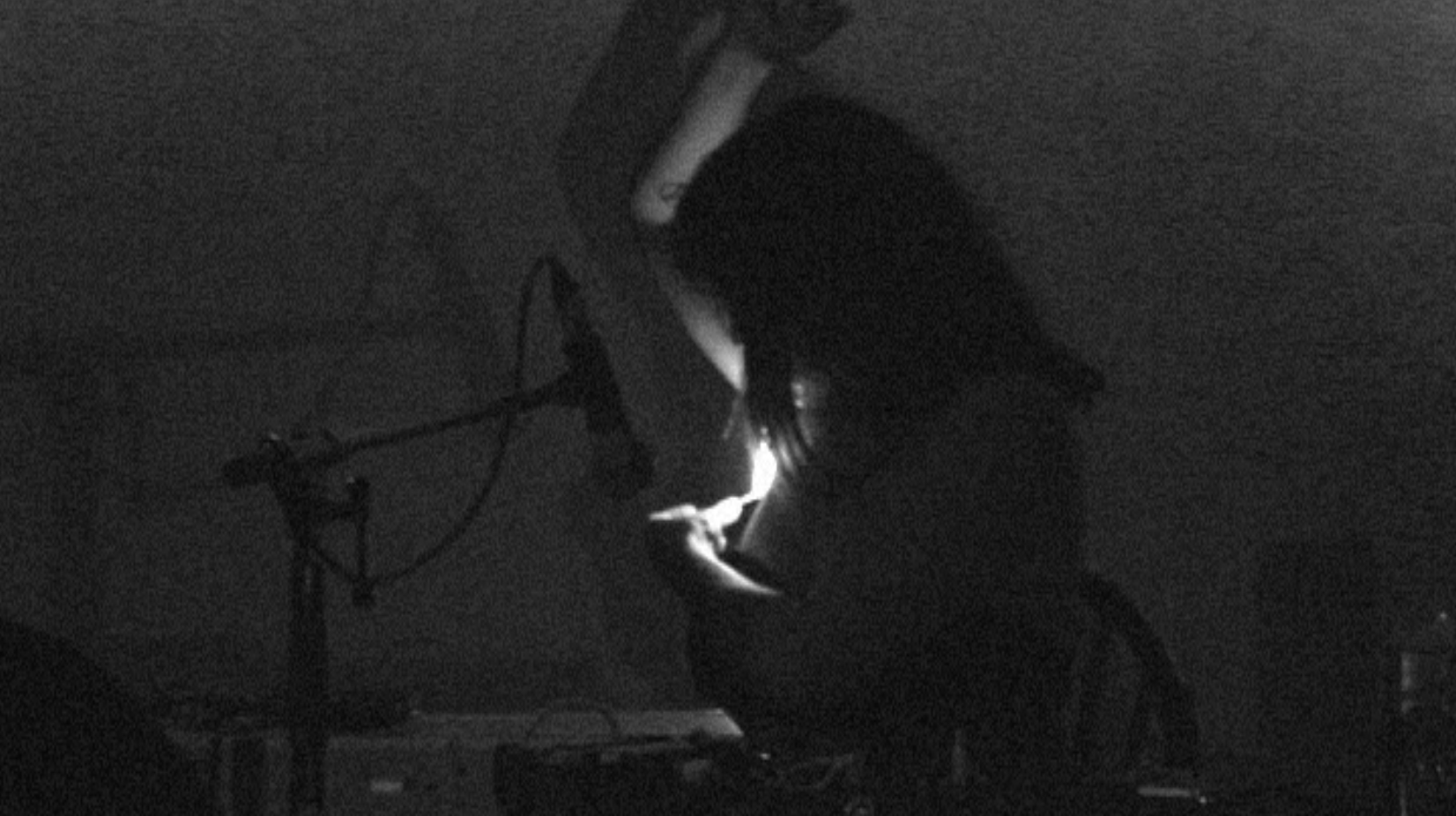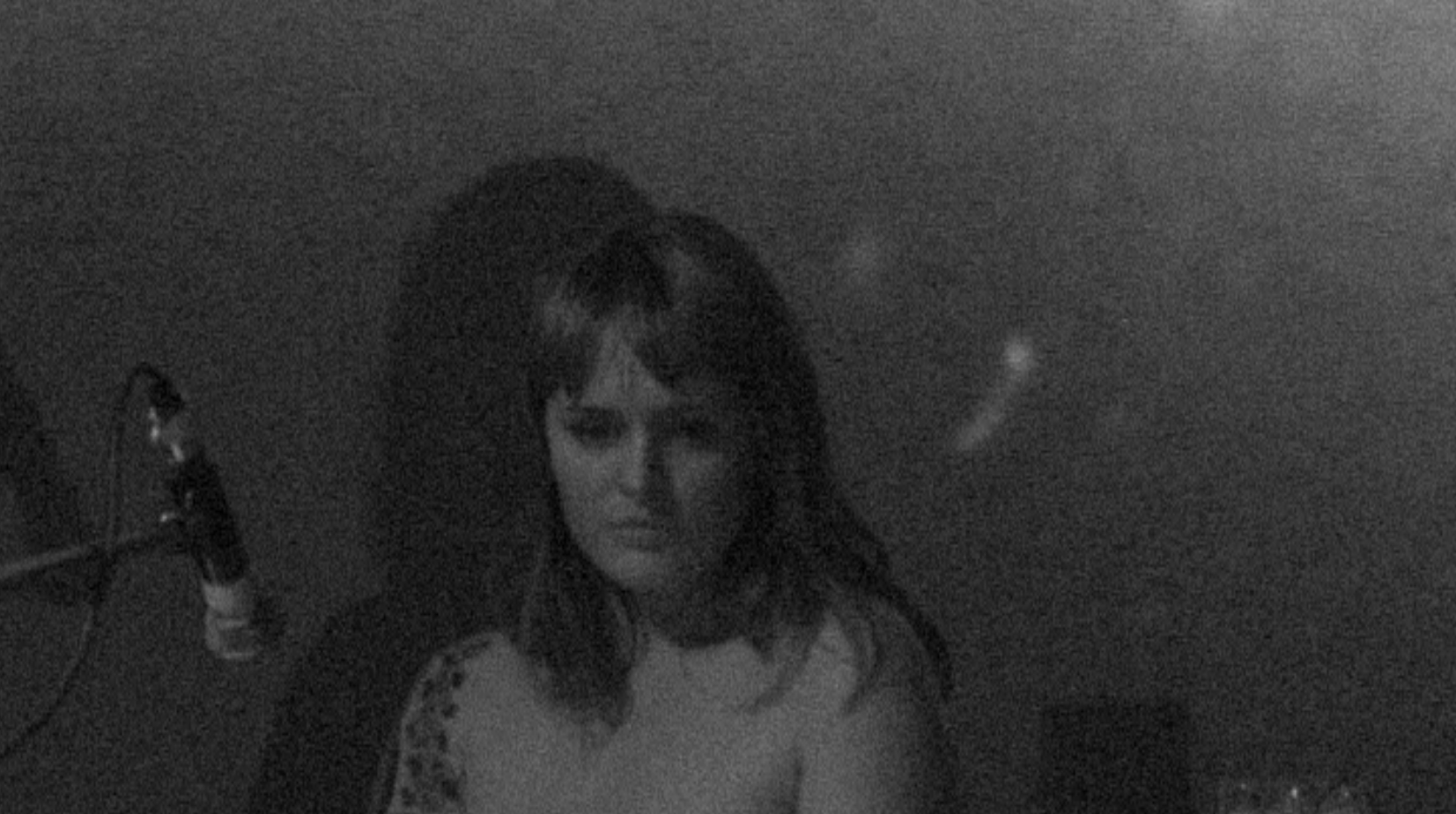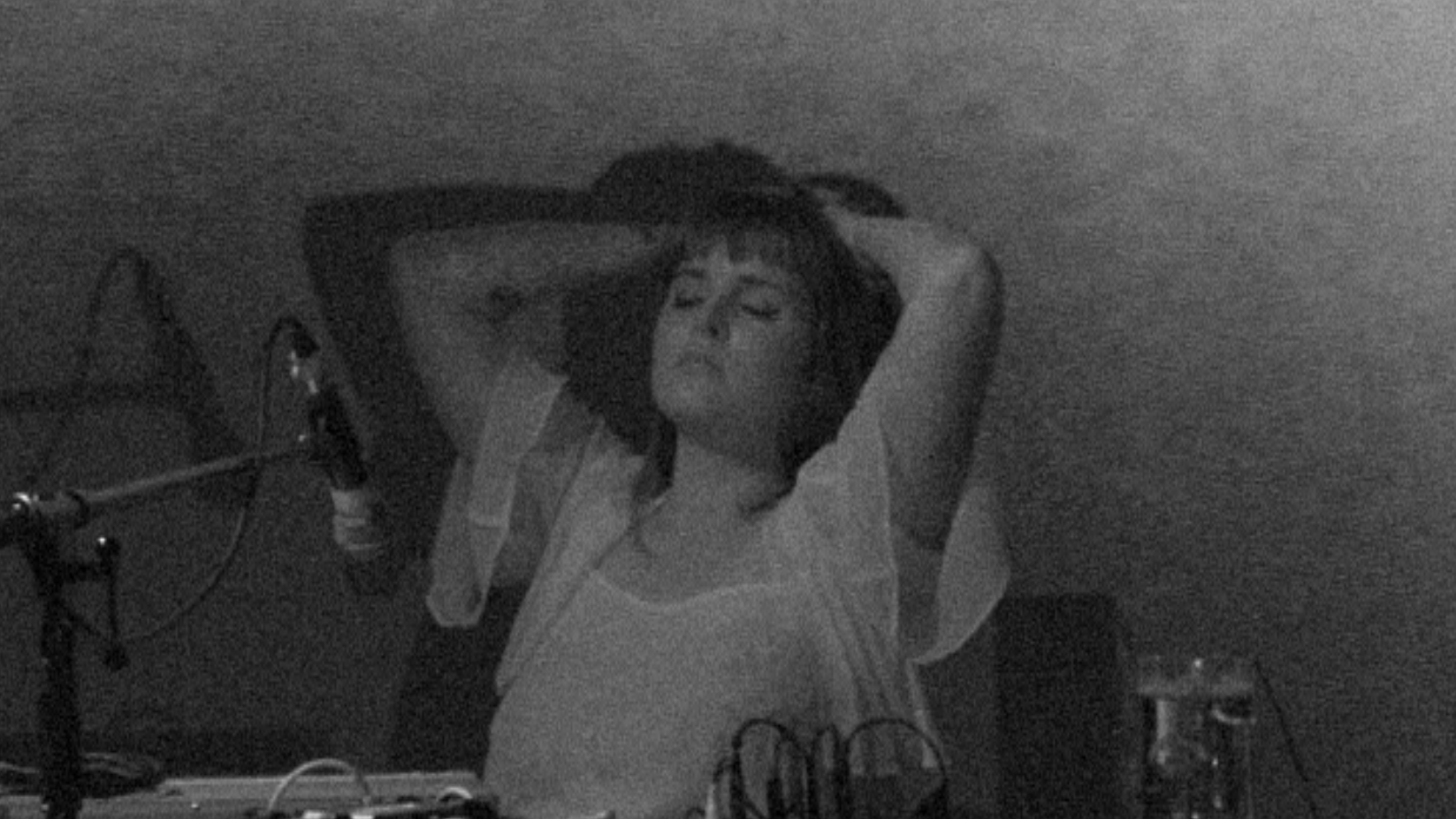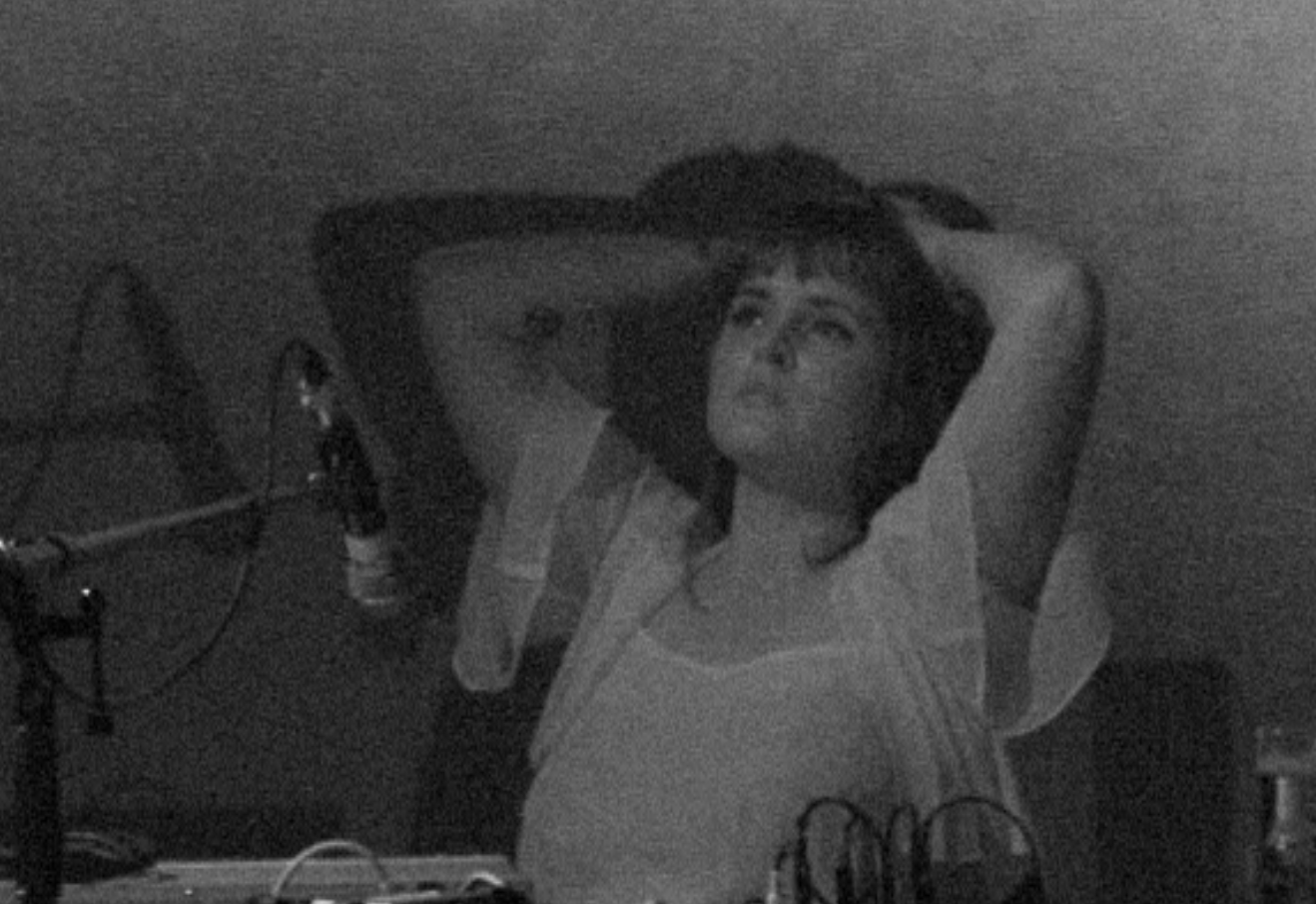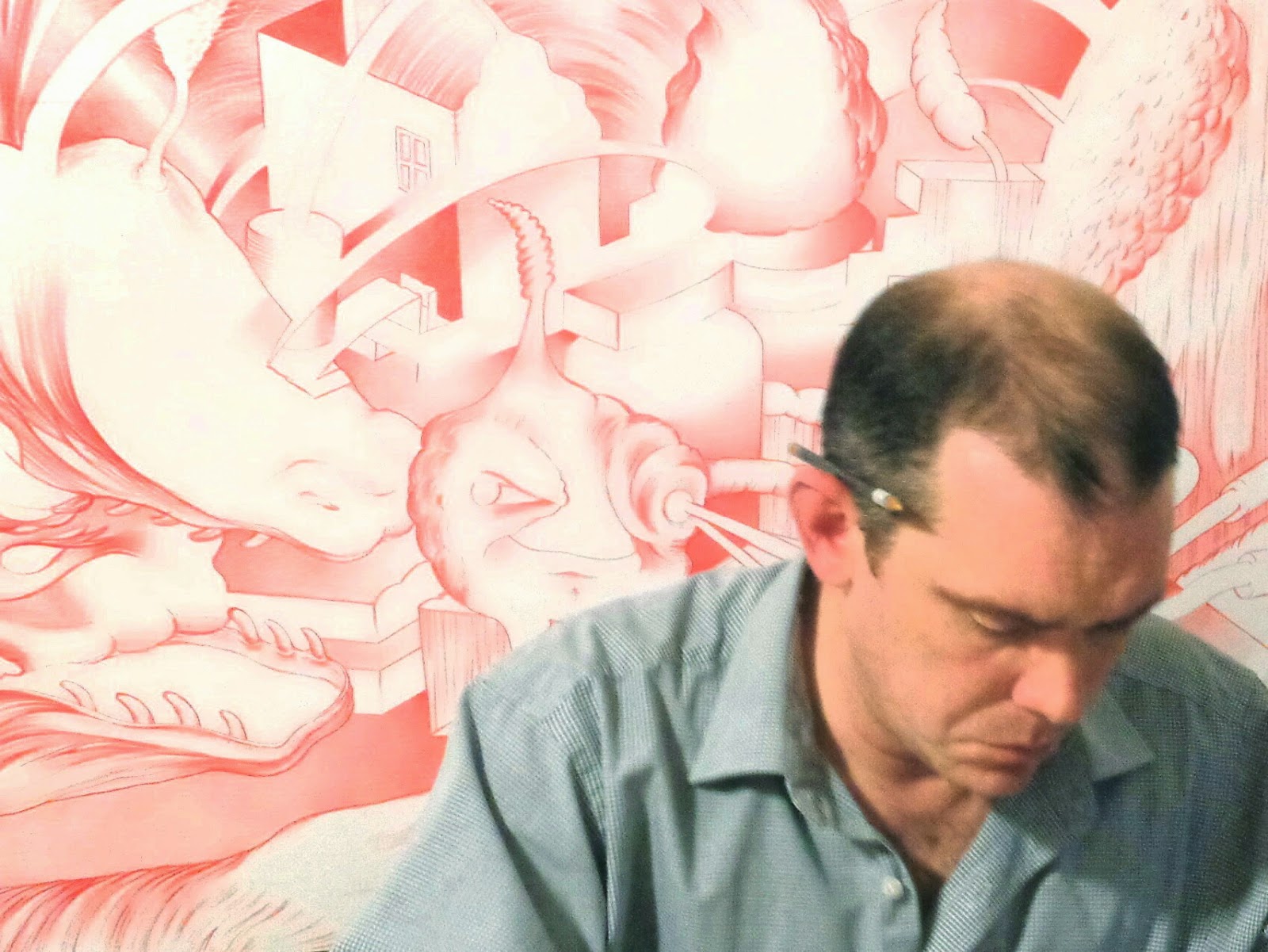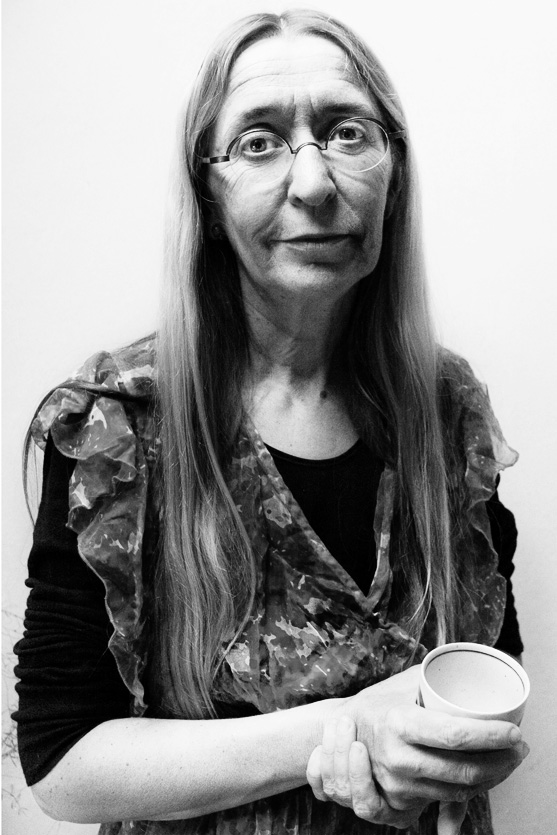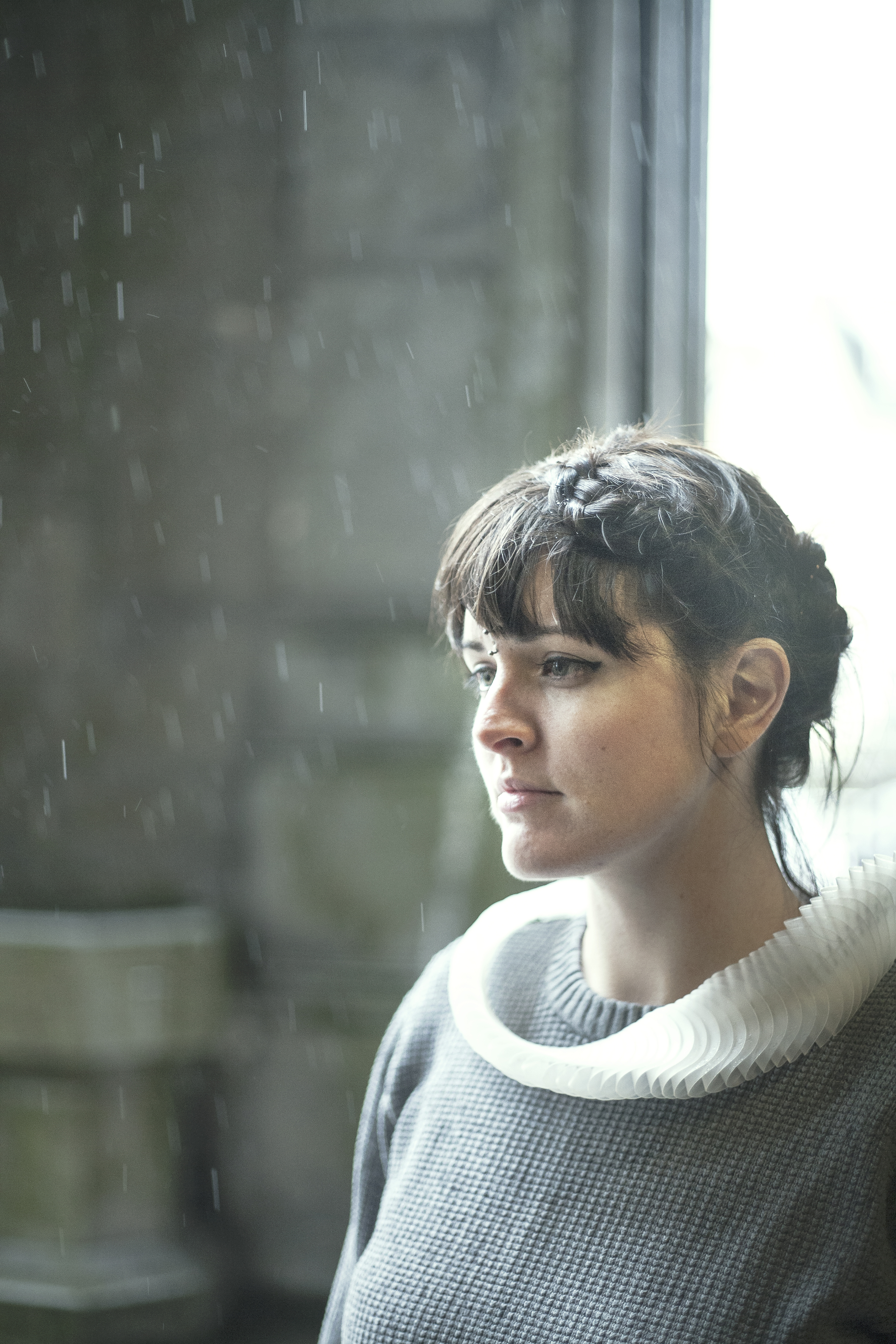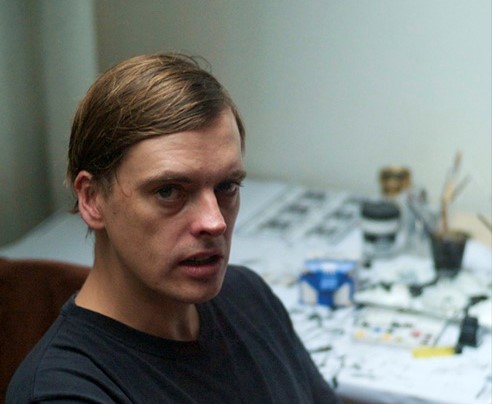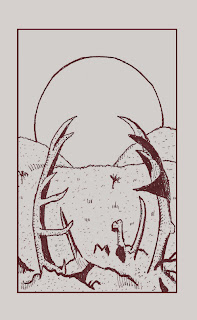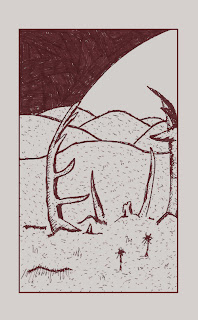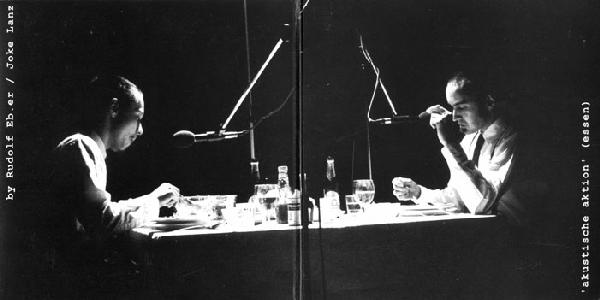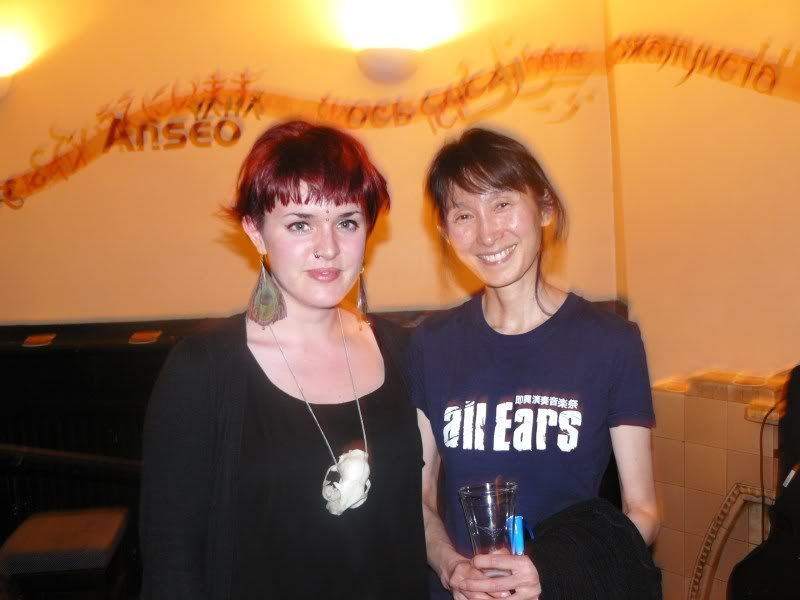If You Could Read My Mind — Vicky Langan at Café OTO
by Fergus Daly
An early evening in the present.
Café OTO stage.
Front centre a small table, containing tape player, CD player, microphone, sheet of paper, hydrophone, glass of water, Alka-Seltzer and box of matches.
Sitting at the table, facing front, a twenty-something woman: Vicky Langan.
Dressed in white dress and white sheer shrug.
Near darkness, the only light provided by flickering 8mm images behind Langan.
Yes, Langan’s performance begins like a Beckett play, one can't help but think of Krapp’s Last Tape. There’s a lot at stake here, in this minimalist performance, the artist inventing her own genealogy, somewhere between Cage and Beckett.
Vicky Langan’s is a sound performance but with important visual elements What exactly are we faced with? A variety of sounds emitted by an assortment of lo-fi technological devices, a body and its gestures, an impassive countenance, all barely perceptible (the video documentation using night vision gives a slightly distorted impression of the visibility of the performance that needs to be mentally compensated for, the dimness of the light seems essential to its success).
Performance art has always had as its goal to undo the image of thought that privileges interiority and posits an internal self that transcends the body and the external world and that grounds the idea of an artist communicating her innermost feelings to an audience. To a large extent contemporary art can be defined by its construction of a plane of experimentation, of 'immanence' prior to subjects and objects. Deleuze challenged Kant's contention that what is given to our faculty of knowledge is known only by virtue of its conforming to the a priori principles of our intuition and understanding - the French philosopher wanted thinking to live in the space hollowed out between intuition and understanding, setting space and time, the forms of sensation, free of the categories and syntheses of a unifying 'I think'. Art would then be experimentation with sensation, with what can only be sensed and which would be subject to the new kinds of a-categorical syntheses found in artworks. Therefore, to a large extent contemporary art can be defined by the unique ways it discovers to sever space and time from the understanding, re-orienting or dis-orienting its concepts and practices.
At Cafe OTO Vicky Langan is certainly not wearing her emotions on her sheer shrug sleeve. A major challenge for contemporary audiences is to abandon common sense notions of interiority and the artist’s communication of prepared ideas or emotions supervised by the inner solidity of the ego. The contemporary artist’s aim is to create spatial and temporal possibilities and experiences for the viewer/listener. Langan’s performance is an assault on interiority, an anti-neurosis, the construction of a self that’s like a vessel for externalized forces; not remembering, still less contemplating, merely being. There’s no concern for gestures and attitudes that attempt to lend a truthfulness to a character as in a theatrical performance - Langan has no interest in us reading her mind, second-guessing the psychological struggle that has led her to lay these sound fragments before us. Resisting interiority and psychology, the emphasis now lies on potential, virtual, strength that is channelled into the minimal gestures that act less as a guard-rail against the outside world than a force to keep memories and personal attachments at bay that have been exorcised elsewhere. There is expression but it’s in no way assignable to the performer.
It isn’t for nothing that we invoked Krapp, Becketts effort to rewrite Proust but without the crucial involuntary memory. Beckett didn’t need that catalyst to creativity as his interest lay elsewhere, not in the opening up of possibilities but in exhausting them: staging the clash between live performer and machinery involving taped memory allowed his character alternately to search for and repress his memories permanently archived in technology, his voluntarist approach to memories rendered possible by their accessibility on imperfectly catalogued spools of audio-tape.
I feel Langan is closer to Proust but seeks to render memory even more impersonal. If for Krapp it’s the voice that invokes time, for Langan, like Proust’s Marcel, it’s material sound: if, for example, in In Search of Lost Time, the contact between spoon and plate is one precipitant of involuntary memory, in Langan’s case it may equally be gaseous or liquid sound that opens up temporal possibilities and experiences for the viewer/listener, channeling the past into the rhythmic nature of an event that captures something of the ineffable.
It’s as if the Proustian battle with the madeleine, the involuntary evocation of Combray it provoked, that had for so long shackled him to the past and led to the near-infinite procrastination of his passage to total creativity, has already been waged in the wings, before Langan’s performance begins. Now she only has to play the part of conduit for her relationship to the 'noisy past' (as Michel Serres says, where there’s technology, where there’s a channel, there must be noise.)
It’s a delicate operation, constructing this passage to exteriority. In her demeanour Langan often seems not self-possessed but other-possessed (little wonder the notion of witchcraft was invoked in reaction to Langan’s performance), as if present at her own absence.
It is no easy task to maintain open all the possibilities of sound with no reference to anything outside itself and a greater feat still to multiply the specific sounds (personally collected and recorded) - voices, animal and metal sounds, recordings of activities, for example, pushing a heavy box around an empty building - without falling into the trap of arbitrariness.
Necessity must be constructed, the specific space-time of the performance-event must be rendered a consistency that becomes its necessity. How will we recognise this necessity, this factor that makes it ‘work’ like a machine? We hear the judgment so often today, ‘it worked’, ‘it didn’t work’. With the contemporary artwork its success may often seem undefinable in any other way. I am reminded of Chantal Akerman’s account of editing her first installation piece:
We rolled the 3 tapes with a few minutes delay between them, after some time I shouted (to the editor Clare Atherton) 'it's working!' - it worked for 4 minutes, then I said 'it’s not working any more'. [And] after I saw La Captive I thought 'How come I made it work?' I’ve no idea. Some films you do very well, you do everything you should, and it has no grace. Why?
This ‘why?’ isn’t the artists problem, if anyone’s it’s the critic’s: “the role of the artist is to be conductive rather than creative in any conventional sense. An artist selects a set of potentials and sets them in motion. She renders them sensible – and therefore connectable – but stops short of prescribing how such connections must be made” (JE Panzner).
How can we refine Akerman’s notion of grace? At Cafe OTO the moments of grace come from Langan’s fragile and intimate manner of marshalling these externalized objects of sound. Perhaps the first principle of ‘grace’ is a sense of artistic honesty, and the second may be the avoidance of any pre-ordained method; nothing must be pre-programmed, there can be no clear idea underpinning the actualization of the piece that would permit another iteration elsewhere: it’s a time-based form of search and research allied to the skill to let things happen as gracefully as possible. The resulting artwork represents nothing, it simply (or otherwise) is: this situation, this space, this moment. If there is a ‘musical score’ for Langan it is constructed in the event: “it is only the contingent encounter, the unexpected action, the unrecognized noise, which can spur the transformative movement in thought” [Deleuze].
How strange to have an idea with Alka-Seltzer! The source of Langan’s sound materials may be raw, heart-breaking, profoundly personal, but the artist’s task is to transform these sensations into a three-dimensional experience through exteriorizing the possible connective, conjunctive and disjunctive relationships between them, employing the technological support to persistently adjust timbre and to foreground the materializing qualities of the recordings. Any tendency in the audience to behavioural habit or perceptual and affective cliché is challenged as they are led to seek out the sensations and secret movements in the sound vibrations and fluxes of Langan’s montages. If there is unity, it’s the fleeting sense of A Singular Event being ceaselessly reinvented, this inner consistency that prevents the piece from descending into arbitrariness. Having done with the question ‘what does it mean?’ opens up an attentiveness to movements and sensations prior to any subject formation, “the anonymous, pre-linguistic inner movements of the psyche” (as Sarraute put it). The artist-conduit open to the forces passing through them employs procedures/strategies to prevent, as Beckett put it, any factor from ’solidifying the flowing’. Freeing an event always involves defying recognition, not allowing the perceiver to organise the givens of the piece into a pre-existent narrative that denies its novelty.
The visual aspect seems essential to Langan’s performance. On one hand, hissing crackling fizzing plopping exhaling sizzling sounds, on the other a body, waiting shifting arching resting reaching - scrambling the faculties as when Deleuze says that cinema can “constitute a sort of visual music, as if it is the eyes that grasp the sound first.” Two series that come together, intertwine, separate, reunite, creating a rhythm that not only lends the event necessity and consistency but allows the audience to grasp these fleeting sensations as embryonic ideas, thinking-feelings, like thought-clouds that disperse as soon as you try to hang onto them (unformed memories, unnameable sensations, spectral affects or time in a nascent state, neither past nor present, a time of birth and creation):
“when noise successfully drives an act of thought, it is the intrusion of the outside into a system, forcing that system to break down and rebuild in an attempt to maintain stasis. This interference is a motor of creation - the transmission of noise stimulates the system to develop, to become different in spite of attempts to stay the same. Bodies engage with the empirical environment by means of noise, and the engagement is thought itself. True thought is a transfer of noise.” (Sean Higgins)
Late in the performance Langan strikes matches and amplifies the sound made from burning her underarm hair. But simultaneously the burning matches alter the lighting of the scene entirely so that the whole network of relations between the objects and the body (as one object amongst the others) is altered. The spectral quality of this personal (externalized) sound archive now becomes more (perhaps excessively) actual - the boundaries established at the outset (in almost total darkness) shift and there’s a sense of a sudden, unexpected evolution as the viewer seizes on the revelation of a body or body fragment to attach the sounds to. Langan seems to take the risk of characterization, of personalizing the event. There is the danger of a narrative developing in the viewer’s mind at this point that might carry them over the final minutes of crow caws, clanging bells and whimpering dogs, solid forms destroying the general sense of nascency. But this too is a fleeting thought - for most viewers it is a literal flash of lightning, a radical shift in levels of attention giving rise to a revenant hovering over the space that Langan has carved out in OTO in which organic and inorganic materials wrestle with intimate exteriority.
It might be objected that such performances are merely repeating what John Cage, Allan Kaprow and many others were doing decades ago? There may be similarities in approach, but all art is defined primarily by cultural context, and in the contemporary world there is no longer any need for subversion of codes and transgressing of taboos. In the 50s and 60s, and even into the 70s, there were counter-cultural expectations of (and a gleeful audience embracing of) contravention of the established order. In a sense, if the givens were the horizon to go beyond, they were still accepted as givens, as ‘the way things were’.
Now there is nothing left to transgress. Nothing is given any longer, neo-liberalism will tolerate anything as long as there is profit at the other end. For the artist, reality must be constructed entirely from scratch and anew on each occasion. Which makes it all the more difficult to pull off, as Vicky Langan did at Cafe OTO, such a subtly complex and gracefully realised performance.
Fergus Daly's writing is online. Fergus Daly: Selected Publications





